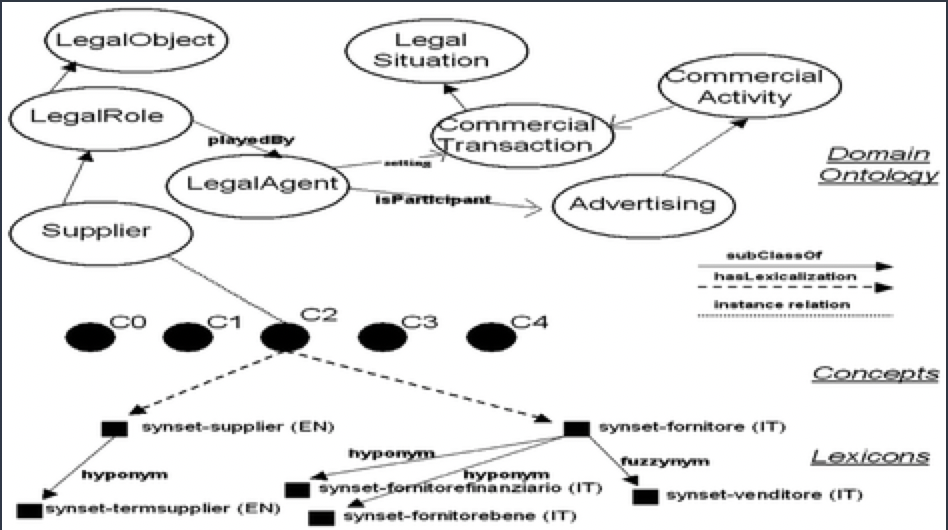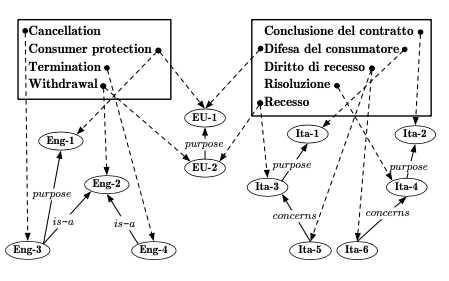Conceptual ontologies and lexical ontologies
Related to Interoperability between ontologies#.
WordNet# is sometimes called a “lexical ontology”. Its material is words, and the relations are particularly relevant for words. They include synonymy (big, large); antonymy (big, small); hyponymy and hypernymy (chair, furniture); meronymy and holonymy (chair, legs); and more linguistic things like derivation (bank, banker).
This is in contrast with ontologies that try to model the world, or humans’ conceptual understanding of the world.
In a simple model, words are the linguistic realisation of a concept, and hence words are automatically present in a conceptual ontology. In a multilayer model, the conceptual and the lexical levels are both present in an ontology, with an intermediate layer (or several) between them.
Biasiotti and Tiscornia (2010): Linguistic perspectives on legal ontologies
Biasiotti and Tiscornia (2010) provide a design for a multilingual ontology in the domain of consumer law.
Domain Ontology
Core elements in consumer law and their relations to each other.
Concepts
List of WordNet# synsets in multiple languages.
Lexicons
Monolingual terminologies which are structured into a WordNet#. The lexical level contains the relations mentioned before in this section (synonymy, antonymy, derivation, …)
Ajani et al. (2009): Legal Taxonomy Syllabus
Another example is Ajani et al. (2009) Legal Taxonomy Syllabus, a multilevel ontology of EU and national levels. There’s an ontology of concepts for EU and for each national system, shown in the small ovals. On a separate level, there are terms in different languages, shown in the rectangles. Those terms are mapped to the appropriate concepts.
The design is similar to the previous, but without the wordnet synset layer. The “concept” layer seems to correspond to the “Domain Ontology” in Biasiotti and Tiscornia, and the “term” layer looks like a flat version of “Lexicons”: the terms don’t have a hierarchy of their own.

